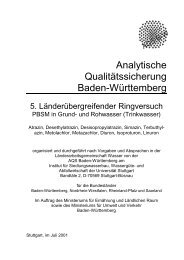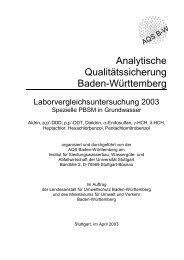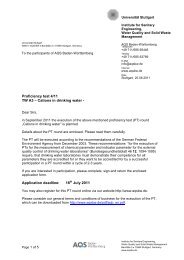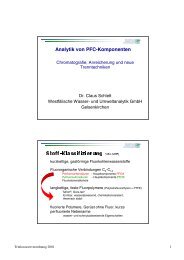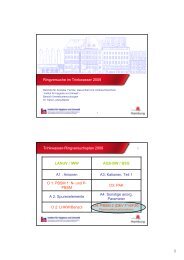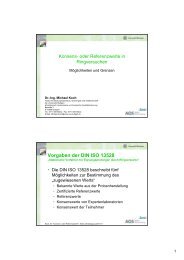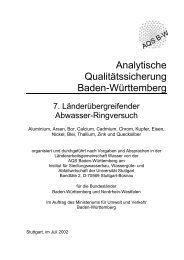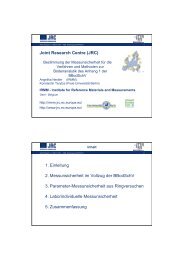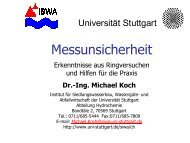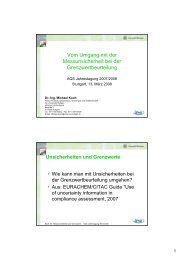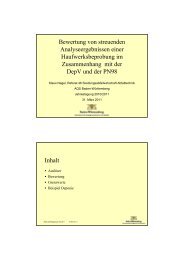Institute for Sanitary Engineering, Water Quality and Solid Waste ...
Institute for Sanitary Engineering, Water Quality and Solid Waste ...
Institute for Sanitary Engineering, Water Quality and Solid Waste ...
Create successful ePaper yourself
Turn your PDF publications into a flip-book with our unique Google optimized e-Paper software.
Chair of <strong>Waste</strong> Management <strong>and</strong> Emissions<br />
Measuring <strong>and</strong> Air Pollution Control<br />
Research topics:<br />
• Inspection of emissions from<br />
waste treatment plants<br />
• In situ solution of odour nuisances<br />
<strong>and</strong> air pollutions<br />
• Development <strong>and</strong> optimization of<br />
waste gas purification plants<br />
• Gas chromatographic analysis of<br />
olfactory compounds using an<br />
“olfactory detection port” (ODP)<br />
• Analysis of volatile organic compounds<br />
(VOC)<br />
And sometimes, the job just stinks<br />
If it stinks, the people in this section are in their element. To find out what, when <strong>and</strong> why it stinks, exactly where<br />
<strong>and</strong> how strongly it stinks, is part of the research focus of this group.<br />
Exhaust gases of all kinds are investigated with the modern gas analysis equipments. The mostly used equipments<br />
consist of gas chromatography with mass spectrometers <strong>and</strong> flame ionisation detectors; as well as of olfactometry<br />
<strong>and</strong> “sniffing port“. But the analysis goes further. Our research can be applied as practical solutions <strong>for</strong><br />
the construction <strong>and</strong> operation of emission reduction facilities from both municipal authorities <strong>and</strong> industies.<br />
It is possible, <strong>for</strong> example, to improve the biological exhaust air purification system of a slaughter house, or to<br />
determine the sources of strong odours emitted from a cardboard plant, which causes nuisance to local residents.<br />
In practice, however, the purification of odour intensive exhaust gases presents a number of difficulties: the<br />
odorous components often remain unrecognized. There<strong>for</strong>e, current measures aim at simply reducing the main<br />
components of the exhaust gases, which are determined by using st<strong>and</strong>ard analysis methods, while the odorous<br />
trace substances remain unrecognized. However, by means of a combination of the analytical methods, specific<br />
odour relevant components of exhaust gases can be determined. It is there<strong>for</strong>e possible to optimise exhaust gas<br />
purification systems (<strong>for</strong> odour emissions these are often biological methods). Our work is considered in both<br />
technical <strong>and</strong> economical aspects. Currently, national <strong>and</strong> international research projects are being conducted,<br />
the aim of which is to develop technically <strong>and</strong> economically effective exhaust gas purification methods using a<br />
combination of different processes. Our experience can be taken as reference by both national <strong>and</strong> international<br />
regulations.<br />
102




